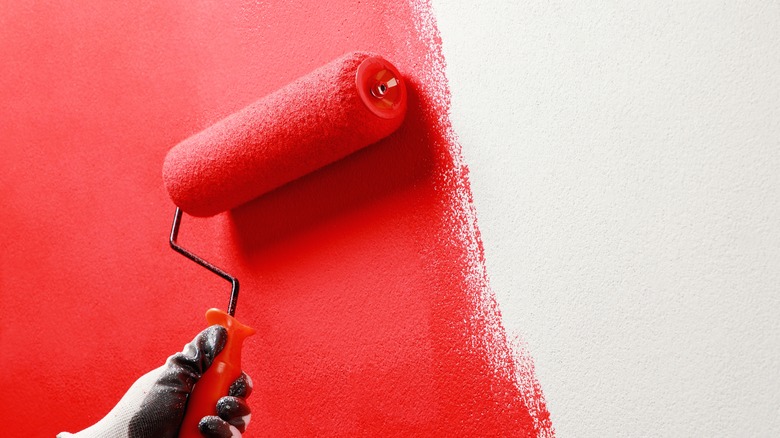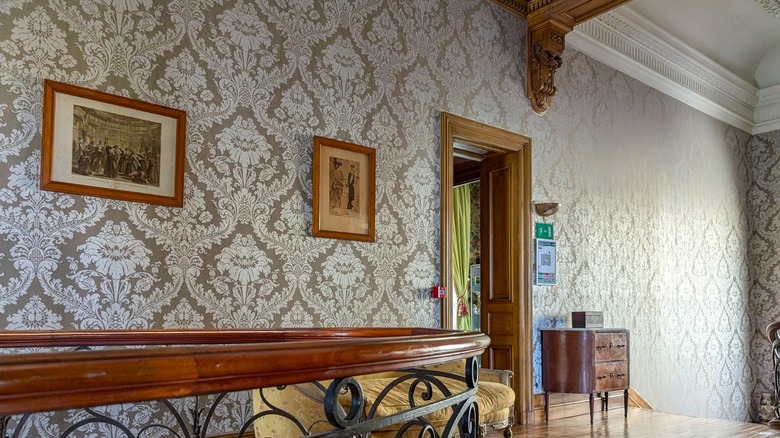The One Type Of Wallpaper You Should Never Paint Over
Ditching the wallpaper and replacing it with a clean, freshly painted wall changes the look of a room dramatically, but the task can seem daunting. Removing wallpaper and the glue that holds it in place is a tedious task, and you won't know if the job will be easy or difficult until you start. Some wallpaper grips the surface and won't let go while others pull off in complete sheets. You may have a vague recollection of someone, somewhere, saying you should never paint over wallpaper, but that someone was wrong. You can paint over most wallpaper when it's properly prepped, with one exception. Textured wallpaper will never look like a smooth wall, even with multiple coats of paint.
There's no easy way to remove texture from wallpaper. You can sand or scrape it, but a ghost of the texture will remain, no matter how much effort you put into it. The law of diminishing returns will catch up with you — the time you spent trying to remove the texture from the wallpaper could have been better spent simply removing the wallpaper. Even untextured wallpaper presents a few obstacles if it's not perfect. Before you can paint over it, you need to deal with seams that are separating, patches of missing paper, deep scratches, and other imperfections. In a way, they present the same problem as textured paper — they'll show through the paint.
Painting textured wallpaper
Textured wallpaper isn't a new phenomenon. Flock wallpaper was first used as early as the 17th century to imitate more expensive fabric wall coverings. A fuzzy byproduct of the textile industry was adhered to paper to create the texture. It's still available, but the texture comes from manmade products. Grasscloth made from natural products woven together is a popular textured wallpaper, as are cork and bamboo, which are sustainable wall coverings. None of these can be painted over without the texture being obvious through the finished paint, and each type of paper presents its own removal hurdles. There are myriad commercial products on the market for wallpaper removal, but if you prefer to do it yourself, some textured wallpapers come off with hot, soapy water, others need the heat from a hair dryer or heat gun, and still others respond to steam. You may also need to remove wallpaper glue from the walls.
If you choose to paint over wallpaper, dampen a test area to see if the moisture causes the wallpaper to pull away from the wall. If it pulls away easily, you may as well remove all of the paper. If you'd prefer to paint, find and remediate imperfections. Reseal or hide wallpaper seams and use drywall compound to fill in holes and scratches. Sand the repairs, and wash the entire wall. Use an oil-based primer to prevent the wallpaper glue from releasing and follow that with whatever paint you've chosen. You will most likely need to do multiple coats to cover up the wallpaper's color pattern.

